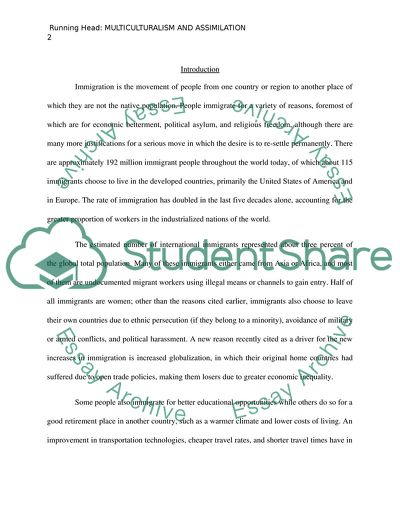Cite this document
(Multiculturalism and Assimilation - Two Different Approaches to Immigr Assignment - 1, n.d.)
Multiculturalism and Assimilation - Two Different Approaches to Immigr Assignment - 1. https://studentshare.org/culture/1800416-compare-and-evaluate-multiculturalism-and-assimilation-as-alternative-approaches-to-dealing-with-immigrant-populations-use-evidence-from-at-least-2-countries-to-support-your-evaluation
Multiculturalism and Assimilation - Two Different Approaches to Immigr Assignment - 1. https://studentshare.org/culture/1800416-compare-and-evaluate-multiculturalism-and-assimilation-as-alternative-approaches-to-dealing-with-immigrant-populations-use-evidence-from-at-least-2-countries-to-support-your-evaluation
(Multiculturalism and Assimilation - Two Different Approaches to Immigr Assignment - 1)
Multiculturalism and Assimilation - Two Different Approaches to Immigr Assignment - 1. https://studentshare.org/culture/1800416-compare-and-evaluate-multiculturalism-and-assimilation-as-alternative-approaches-to-dealing-with-immigrant-populations-use-evidence-from-at-least-2-countries-to-support-your-evaluation.
Multiculturalism and Assimilation - Two Different Approaches to Immigr Assignment - 1. https://studentshare.org/culture/1800416-compare-and-evaluate-multiculturalism-and-assimilation-as-alternative-approaches-to-dealing-with-immigrant-populations-use-evidence-from-at-least-2-countries-to-support-your-evaluation.
“Multiculturalism and Assimilation - Two Different Approaches to Immigr Assignment - 1”. https://studentshare.org/culture/1800416-compare-and-evaluate-multiculturalism-and-assimilation-as-alternative-approaches-to-dealing-with-immigrant-populations-use-evidence-from-at-least-2-countries-to-support-your-evaluation.


